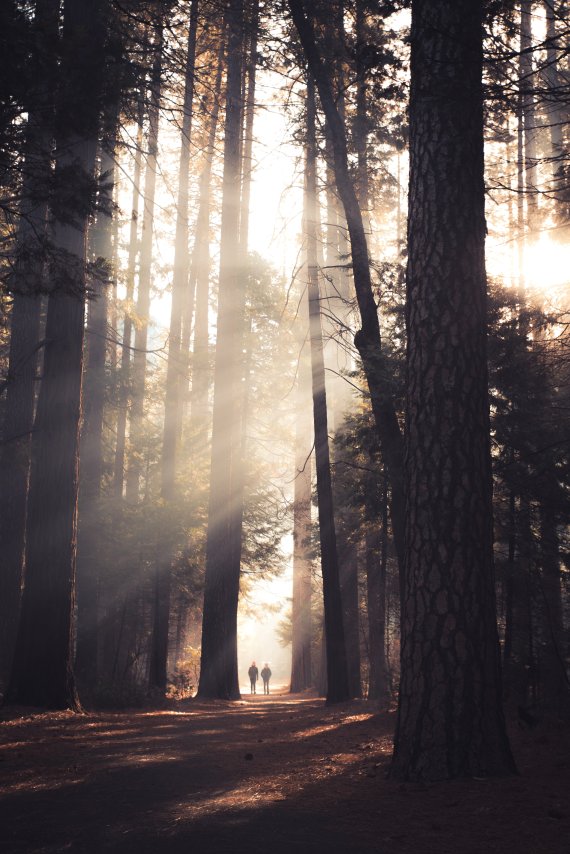The term Shinrin Yoku first appeared in 1982 in connection with a forest protection campaign in Japan. The campaign was intended to encourage people to get back to nature by spending time in forests. Literally translated, Shinrin Yoku means "to bathe in the forest", and was seen as a term to motivate people to experience, feel, taste and smell the nature and forests of Japan. Today, Shinrin Yoku is not only promoted by the government in Japan, but is also recognized as an effective healing principle in medicine.
Forest bathing involves an intensive stay in the forest. Without a time limit or goal, the atmosphere of nature should not only be seen, but experienced. This can be done by slowly strolling through the forest, smelling and, for example, feeling the bark of the trees and the damp moss. Experiencing the scent, taste and sound of the forest are cornerstones of forest bathing. As well as staying in places in the middle of the greenery where it is possible to meditate, or simply to observe the surroundings. All this should be done without haste and strehttps://www.ispo.com/en/know-how/id_76286478/health-exercise-is-the-answer-to-stress-.htmlss, so that you can fully engage with the forest.
Since the term Shinrin Yoku first appeared in the 1980s, regular studies and research have been conducted on the subject to date in order to scientifically prove the positive effects of forest bathing. The results speak for themselves: spending time in the woods has a mood-lifting and stress-relieving effect. Among other things, phytoncides, which plants and trees emit to ward off bacteria and disease, are responsible for this. Inhaling the phytoncides has a stress-reducing and blood pressure-lowering effect on humans. It has also been proven that the heart rate stabilises during forest bathing and thus also contributes to calming, stress reduction and general satisfaction in humans.
Strictly speaking, there are no rules for forest bathing, except that you should get involved with nature as much as possible. The motto is: experience instead of thinking. Instead of constantly checking your mobile phone for the route in the forest, the mobile phone should be switched off and the sensory perceptions should remain switched on. Since forest bathing is all about relaxation, you shouldn't give yourself a time limit for your trip to the forest. Instead, the idea is to be present and fully engage with the various stimuli and impressions of the wild greenery.

Actually, this is possible in any forest. Especially in Germany and Europe, the choice is great, Germany is one of the most densely wooded countries in Europe. Almost a third of the total area is covered with trees, including the well-known forests such as the Black Forest, Spreewald, Saxon Switzerland or the Fichtelgebirge. But besides these famous ones, there are of course also smaller and less known forests, which might be in your immediate vicinity. For cautious beginners it is recommended to join a forest bathing workshop and take a guided tour through the forest. Experienced nature lovers, however, can go out into the peace and quiet on their own.

 OutDoor by ISPOOutDoor in transition
OutDoor by ISPOOutDoor in transition
- Awards
- Mountain sports
- Bike
- Fitness
- Health
- ISPO Munich
- Running
- Brands
- Sustainability
- Olympia
- OutDoor
- Promotion
- Sports Business
- Textrends
- Triathlon
- Water sports
- Winter sports
- eSports
- SportsTech
- OutDoor by ISPO
- Heroes
- Transformation
- Sport Fashion
- Urban Culture
- Challenges of a CEO
- Trade fairs
- Sports
- Find the Balance
- Product reviews
- Newsletter Exclusive Area
- Magazine




